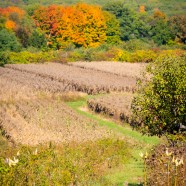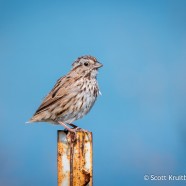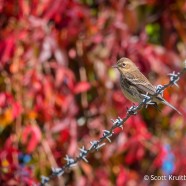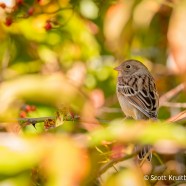Fall Trail
This is typically a terrific October weekend to get outside and enjoy the beautiful fall foliage starting to peak in the Northeast. However, we will be seeing some chilly temperatures and snow in some areas…that just means you have to bundle up a little more before you head to the great outdoors. Walk, hike, run, bike, bird, photograph – something, anything, outside this weekend. Soak in the environment and all the shades. Scott Kruitbosch Conservation & Outreach Coordinator
Read MoreTailless Song Sparrow
Considering it is migration time for our sparrows that usually means they are not undergoing a molt. They need those feathers to fly! This Song Sparrow (Melospiza melodia) looked like it was losing a few, though, and it certainly lost a tail. This can happen after a near miss from a predator… Scott Kruitbosch Conservation & Outreach Coordinator
Read MoreMale Monarch
This male Monarch butterfly certainly looked like it was in bad shape while it fed on this goldenrod a few days ago with a sizable portion of its wing missing. Despite its tattered and worn appearance it was still flying well, though I do not think this will be one of the individuals that makes it to Mexico. If you are passing through the Northeast in mid-October you are already late, and this sort of condition will not make the long trip any easier or faster. Nevertheless, good luck little guy. Scott Kruitbosch Conservation & Outreach Coordinator
Read MoreYellow-rumped Warbler
This is the all too rare photo of a Yellow-rumped Warbler without any yellow or rumps involved. We certainly have a lot of red and some blue to highlight the drab but stately shades of this individual Setophaga coronata, one of many millions of the species on the way south right now. Perhaps a few will decide to stay into the winter in a patch near you.
Read MoreFall Field
Here are some more seasonal shots to get you into the fall mood – a Field Sparrow (Spizella pusilla) from a couple of days ago during a busy migration time for the species. They will pass through the eastern U.S. in good numbers in the autumn with some staying into the winter if they find an acceptable field or other open space with plenty of seeds. They are certainly declining overall in the east because we have far fewer fields than we used to as our natural areas often revert back to forest with the decline of agriculture combined with the continued rise of suburbia. Other remaining...
Read More








